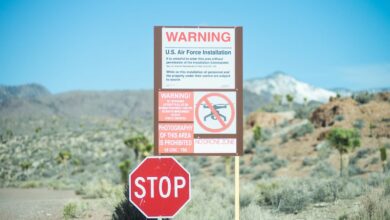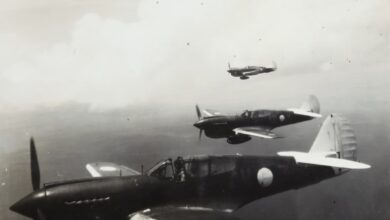The history of war is as old and as complex as humankind itself. The tools of war have evolved. From stone slingers on Mediterranean hills to cannons roaring across European plains. But one thing has remained the same: their deep and brutal ingenuity.
In the Perfect Weapon docuseries, ex-Marine Monty Halls and archaeologist Stuart Prior take us on an exciting global journey through time and geography, tracing the history and impact of the most iconic weapons used by mankind. In six visceral episodes, they combine field testing and archaeological insight to not only showcase weapons but also to ask: What makes a perfect weapon?
Step into the muddy shoes of history and explore each episode.

Episode 1, Skull Smashers: The Blunt Truth: The Perfect Weapon
The blunt weapon was the most common type of weapon on the battlefield long before arrows and guns were invented. Imagine a Celtic warrior in the misty plains of Iron Age Britain, wielding an oak club or iron-headed mace. These were not elegant tools, but raw, bone-breaking weapons of force.
Monty Halls, Stuart Prior, and their team begin the journey amongst the unsung heroes in ancient combat. The “Skull Smashers”, a visceral look at the world of hammers and maces and cudgels, those heavy and crude-looking tools that were used to smash through shields and early forms of armour, as well as skulls.
What makes these weapons so powerful? Simplicity. The mace’s physics is incredibly efficient, transferring kinetic energy through weight and speed. The hosts test a variety of replicas on the rolling English countryside to prove that, sometimes, the simplest weapon can leave the biggest mark.
The blunt weapon evolved in each culture and adapted to the armour at the time. From the Viking era of Scandinavia to feudal Japanese battles, blunt weapons have been a part of warfare for centuries. Before bullets and bombs were invented, the use of blunt weapons was both practical and brutal.
Episode 2 – Gunpowder – The Great Disruption
The introduction of gunpowder in the 13th century in Europe marked a major shift in warfare.
“Shootout”, a film about the history of traditional warfare, takes us back to that pivotal time in history when it was turned on its head. The introduction of firearms changed not only the way wars were fought, but also who was able to fight in them. Armed with a musket, a peasant could now fight a knight in heavy armour. This democratisation in violence changed entire empires.
Monty and Stuart test the accuracy and range of replicas from early European cannons and muskets. These tests are conducted in a misty Devonshire or abandoned fortress, which mirrors the chaotic and smoky gunpowder era.
In one test, they loaded a 15th-century hand cannon and fired it at a chainmail wall. The results were sobering. Armour that once protected elite soldiers became useless when faced with explosive power.
Gunpowder is a global phenomenon. Each culture has adapted black powder for its warfare, from China’s earliest fire lances to India’s massive Mughal Zamburaks. This episode shows how a chemical compound, discovered in the lab of a Taoist Alchemist, spread across continents and changed warfare forever.
Episode 4: The Art of Breaking Walls
If war is about dominance, then sieges represent the ultimate test of endurance. In the ancient Mediterranean and Europe, siege engines were the worst nightmare for cities.
In “Siege Engines”, Monty and Stuart explore this engineering marvel, recreating and launching two of its most iconic machines: the trebuchet and the mangonel. The reconstructed wooden trebuchet towers against the skyline and reminds one of medieval battles in France and the Levant, where these machines destroyed walls and moats.
These machines are tested in an open field to measure their power and accuracy. The results are amazing. It’s more than a spectacle when a 90kg stone flies 300 meters. This is physics weaponised.
This episode is more in-depth. We examine the Siege of Tyre (332/BCE), in which Alexander the Great built the famous causeway that connected the island city to the mainland, and the Siege of Sarajevo, the longest siege of the modern era. Again, geography played a role. Mountains, rivers and city layouts dictated weaponry and strategy.
As Monty Stuart shows, siege warfare is as much a matter of patience and logistics as it is brute force.

Episode 4 – Slings and Arrows: The Flight of Death
It’s primal to use the air as a means of killing. In “Slings and Arrows”, we go back to the early airborne weaponry, which relied on wind currents and human dexterity to attack from a distance.
Monty, a Welshman, demonstrates how powerful the sling can be. He is standing in the rugged, wild highlands of Wales. In the hands of a skilled user, this sling can be deadly or maiming from up to 100 meters. David used this weapon to defeat Goliath. It was also a mainstay of ancient Mediterranean armies.
This episode then follows the evolution of bows – longbows, shortbows, recurves and finally, crossbows. The geography of each was the determining factor. The English longbow, with its impressive range, was perfect for the flat fields at Agincourt. The Mongol composite arch, which was lighter and more deadly, was perfect for horseback arrowing across Central Asian steppes.
The crossbow was a new revolution. They were easy to use and made soldiers more deadly with less training.
The episode ends surprisingly: Monty tests out a modern Olympic arch, demonstrating just how far precision bowing has advanced. Even here, ancient principles still apply. Flight, tension and force – a timeless trio.
Episode 6: Battle Blades-Edged Elegance
The blade is a weapon that has become iconic, personal and feared.
In “Battle Blades,” Monty & Stuart explore the evolution of sharp-edged weaponry, from the bronze dagger to the steel-forged Katana. Blades are more intimate than blunt weapons or ranged weapons. Blades require proximity, courage and skill.
The gladius, the Roman short sword, is used to begin testing. Monty recreates a Roman training yard to demonstrate how short stabbing weapons were dominant in the ancient world. Stuart introduces curved blades, such as the Persian shamshir. He explains how different geographies, from desert warfare to naval board actions — shaped their length and curves.
Japanese swords are also a major attraction. With its folded steel and cultural mystique, the katana embodies the marriage between craftsmanship and functionality. Stuart explains how the katana’s razor edge is achieved by a differential hardening process.
Monty, the Marine that he is, compares them to the modern combat knives, which are still used by soldiers. We see in the demonstrations how deadly a small knife can be when used with precision.
Blades, whether ceremonial or deadly, reflect the spirit of a warrior’s culture.
Episode 6 – Dressed to Kill: The Armour of Survival
What is the use of a weapon if it cannot defend itself?
“Dressed to Kill”, a new documentary, shifts the emphasis from offensiveness to survival. Armour has evolved from animal hides and modern Kevlar to compete with weapons.
Monty and Stuart wear different armours throughout the centuries, from Roman lorica segmentata to medieval full plate and chainmail. They take on obstacle courses, fights with swords and climbing challenges in order to test their mobility and protection.
The results are very interesting. Plate armour is cumbersome, but it offers a near-total level of protection against swords. Mail is flexible, but it offers limited protection against blunt force. Each suit is a compromise.
Stuart explores the archeological record, including grave sites in Europe, Japan, and India, to uncover how armour design reflects not only technology but also terrain and tactics. In mountainous areas, lighter armour was preferred. On flat terrain, heavier suits were more suitable.
Monty tests modern armour, such as flak jackets and Kevlar Vests, to simulate real battle scenarios. The difference is dramatic. The idea of fighting and surviving the battle has not changed.

Final Thoughts
Perfect Weapon is a six-part series that not only shows the weapons of war, but also connects them with the human story. Each weapon is shaped geographically, by culture, by necessity and by fear. The series shows us how wars are always local, before they become global.
Monty Hall is a veteran soldier, and Stuart Prior is a scholar. They are the ideal guides. Their banter, their field tests and their deep dives into the history of each episode give it both grit as well as insight.
The sound of war has echoed through the centuries, whether it is the clang or boom of a sword in an Alpine pass, or a distant cannon blast in a Crimean Valley. Perfect Weapon brings this echo to life.
Next time you look at a sword or read a history book about a siege, keep in mind that every weapon has its own story. Sometimes, the “perfect” weapons are those you didn’t expect.




